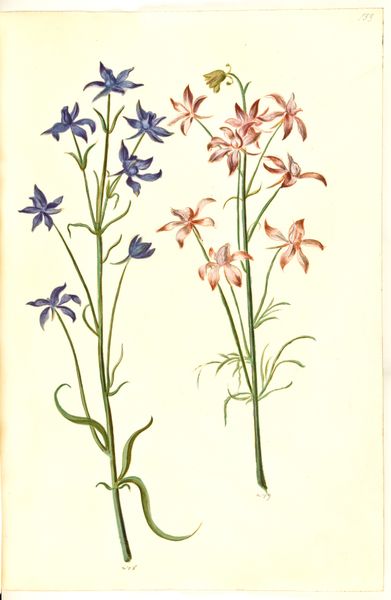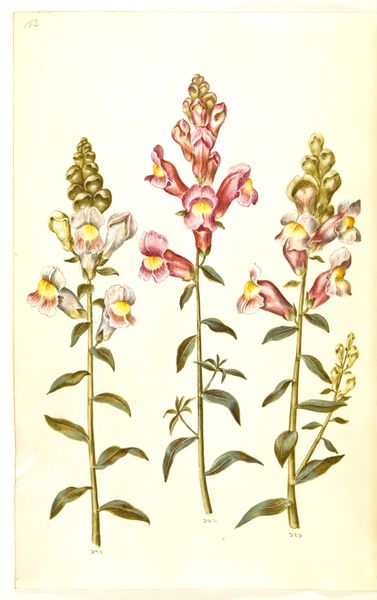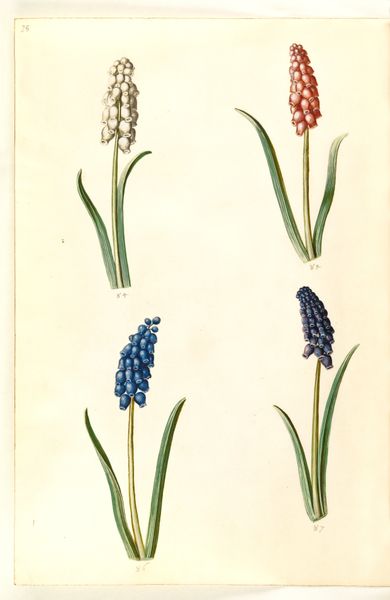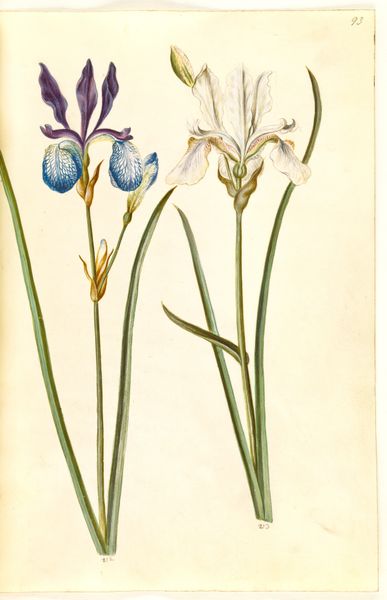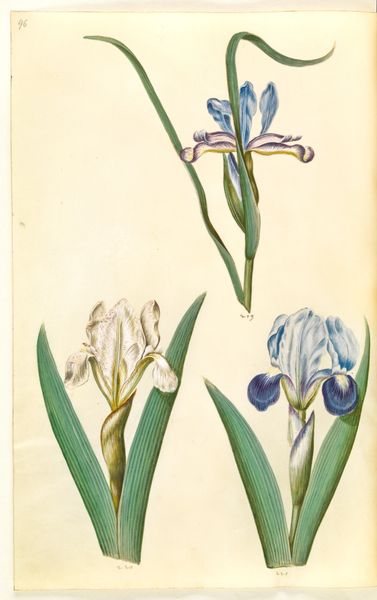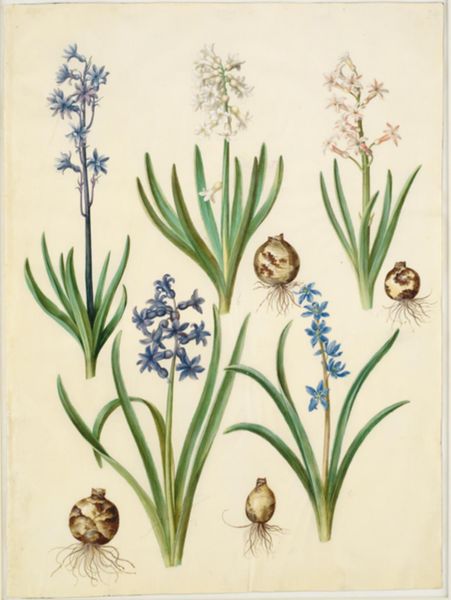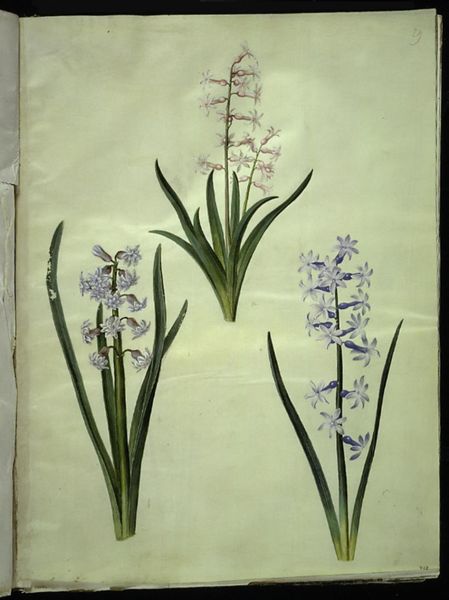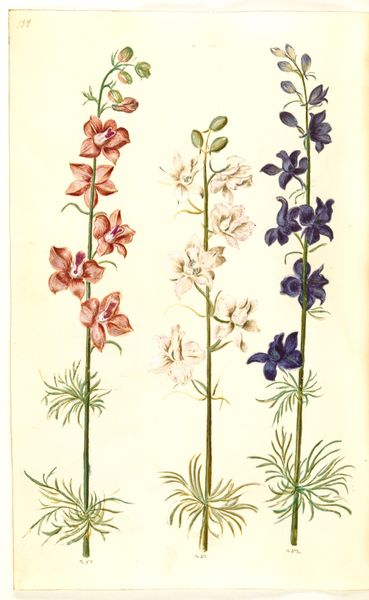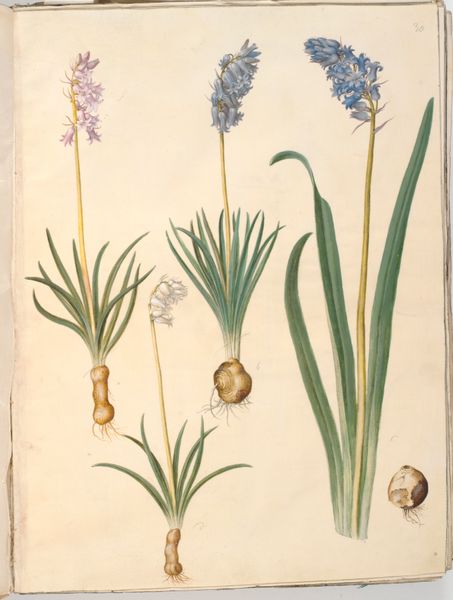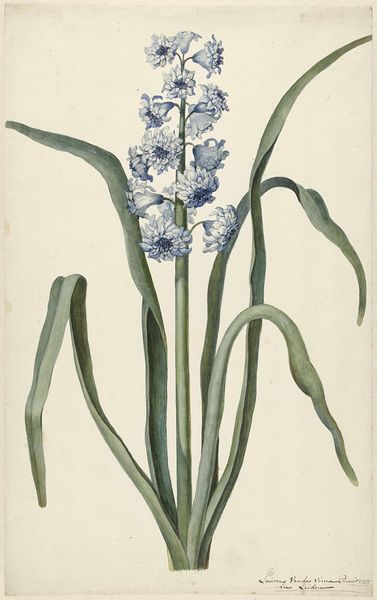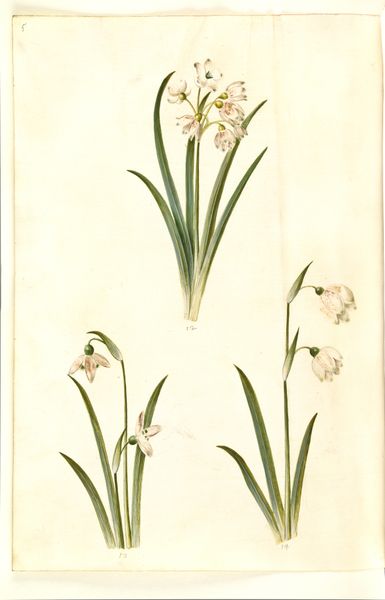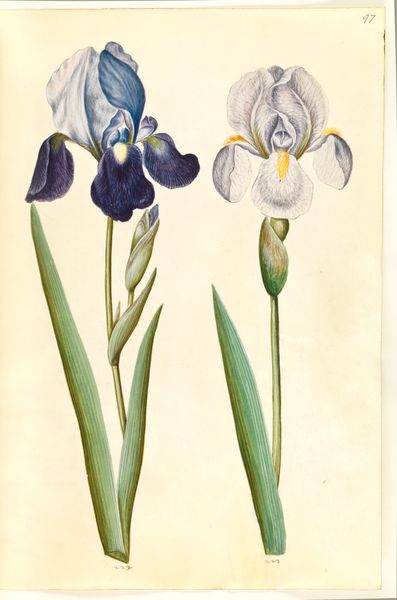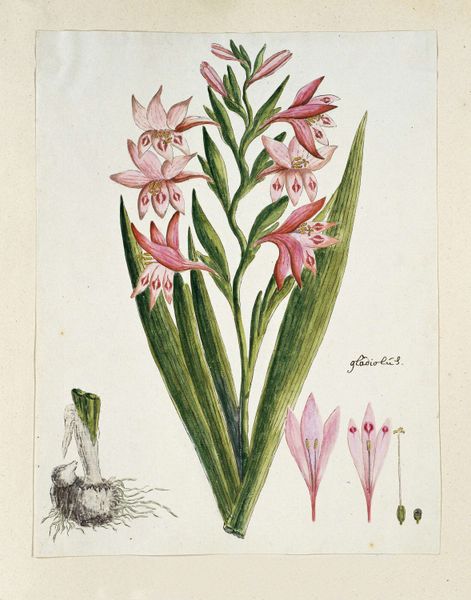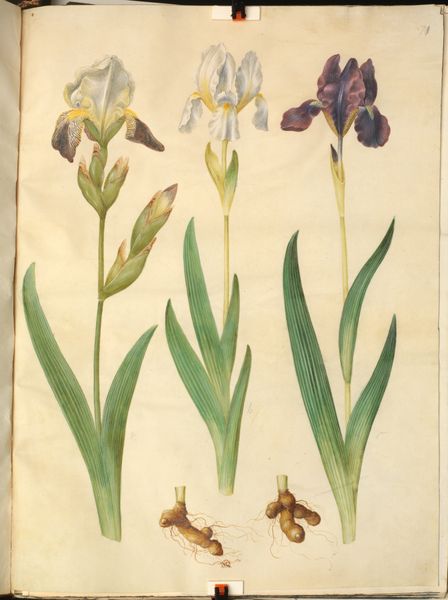
Hyacinthus orientalis (almindelig hyacint) 1635 - 1664
0:00
0:00
drawing, gouache, plein-air, watercolor
#
drawing
#
gouache
#
plein-air
#
11_renaissance
#
watercolor
#
botanical drawing
#
watercolour illustration
#
botanical art
Dimensions: 375 mm (height) x 265 mm (width) x 85 mm (depth) (monteringsmaal), 358 mm (height) x 250 mm (width) (bladmaal)
Editor: This watercolor illustration from the mid-17th century by Hans Simon Holtzbecker depicts four hyacinth plants. I'm immediately struck by how delicately each bloom is rendered. What can you tell me about this work? Curator: Well, from a materialist perspective, we need to consider the "how" and "why" of its making. The paper itself, the pigments used for the gouache and watercolor—these were valuable commodities in the 17th century. Someone commissioned this; they had access to both resources and skilled labor. What does the very act of depicting flora in this way tell us? Editor: It speaks to a growing interest in the natural world, perhaps? Curator: Exactly, but beyond simple observation. Consider the hyacinth itself. It wasn’t native to Northern Europe. Its presence here implies trade, cultivation, and perhaps even status. These were not just pretty flowers, but symbols of wealth and scientific curiosity intertwined. We must also look at Holtzbecker’s technique. Do you notice anything about the way the paint has been applied? Editor: I see thin, translucent layers of color… Almost like glazes. Curator: Precisely. Each layer requires time, patience, and skill. It represents a very particular kind of labor—artistic labor valued for its precision and its ability to translate the material world into a form accessible to an elite audience. Editor: So it’s less about the beauty of the flower and more about the economic and social relationships embedded within its depiction? Curator: The beauty is inseparable from those relationships. This image isn't just *of* hyacinths, it's *about* ownership, production, and consumption. And the intersection between Art and Science. Editor: That’s a really interesting way to think about it. I will definitely look closer at the materials artists choose to use and what was valued back then. Curator: It encourages a far deeper, more critical engagement with the image. Thank you.
Comments
No comments
Be the first to comment and join the conversation on the ultimate creative platform.
